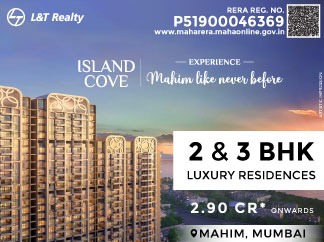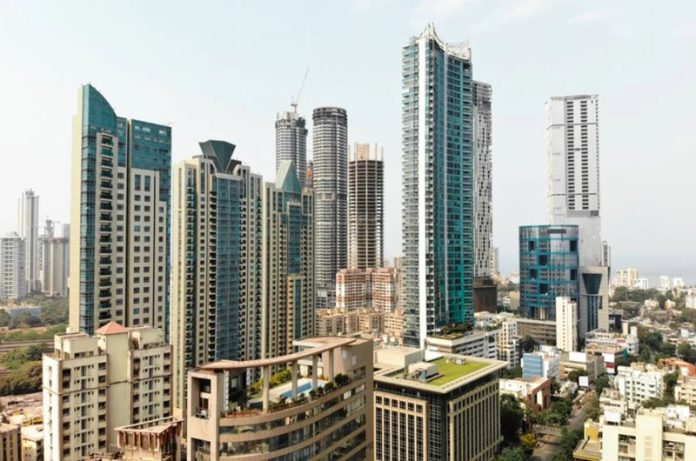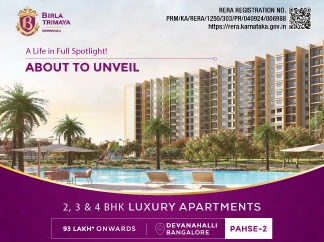Home buying sentiment has hit all-time high records since the pandemic encounter. The trend ascends further with soaring demand for luxury residential properties in the country. CBRE South Asia’s recent report titled, ‘Indian Market Monitor in Q1 2024’, showcase an upward trajectory. The luxury housing segment with properties at and over Rs. 4 crore exhibits 10% Y-o-Y sales growth from January to March 2024.
The overall percentage of luxury segment sale stood at 5% in Q1 2024, pointing to 64% growth in the newly launched luxury housing. In the city-wise data, Mumbai, India’s financial capital tops the chart in the sale of premium homes. In the first quarter of 2024, the city records 15% YoY increase in the luxury residential fragment. India’s financial capital is followed by Delhi-NCR region, Hyderabad, and Pune.
In Hyderabad and Pune, luxury property sale rise by 2X and 4.7x YoY respectively.
Luxury home buying gained momentum recently. Talking about figures 45% of inventory under the luxury belt has been infused in the past couple of years. From 2019, the segment witnessed a bullish trajectory of more than 9% CAGR.
Mumbai, leading the luxury segment holds 40% of the total luxury inventory across the country amidst January-March 24’. Being home to business giants and Bollywood celebrities, Mumbai lures HNIs and NRI investors. Bandra (West), Prabha Devi, Juhu, and Worli are some luxury localities in India’s financial capital for investment. The well-positioning of these areas, property prices range between Rs. 20 – 60 crore. At times, immovable assets register Rs. 100 crore value.
The next hotspot for property investors is Delhi, the national capital accumulating 25% of India’s luxury housing inventory. The figure represents Q1, 2024, i.e. from January to March. For these premium properties, South Delhi and Lutyens’ Delhi are the choicest. In the Lutyens’ zone, Amrita Shergill Marg, Golf Link, and Prithviraj Road render properties between Rs. 40-60 crore.
Gurugram, the millennium city adjoining Delhi, is also a goldmine for investors seeking luxury residential property. The city is best known for its proximity to IT Parks and integrated townships. The finest shopping, dining, and recreational experiences in the city, make it popular amongst investors.
In Gurugram, DLF Phase I/II, Golf Links, and Dwarka Expressway are the most preferred locations. Here, an immovable asset with decent configuration is valued between Rs. 10 – 20 crore. Following the national capital, is Hyderabad, another IT city down south in India. Jubilee Hills, Banjara Hills, Hitech City, Raidurg, and Neopolis are posh residential areas. The average property value here varies between Rs. 20-40 crore.
Across India, the residential sales in the housing segments record at nearly 85,000 units in Q1, 2024. It reflects an 8% YoY increase in the market. A sustainable business witnesses new luxury projects launch of approximately 80,000 housing units. The mid-end projects lead the sales drive with a 47% share in total sales from January- March 24. The price-bracket here is between Rs. 45 lakh to 1 crore.
The second spot is taken by high-end luxury projects valued between Rs. 1 -2 crore. Lastly, the affordable housing projects with price brackets up to Rs. 45 lakh garner fair sale. Pune, Mumbai, and Bangalore together hold a 65% share of total sales. Parallel to this, new launches in Mumbai, Pune, and Hyderabad count for 69% of housing sales in Jan-March 24’.
Anshuman Magazine, Chairman and CEO, India, South-East Asia, Middle East and Africa CBRE said, “The Indian luxury real estate sector demonstrates robust fundamentals for sustained expansion, underpinned by consistent increases in household income and consumer spending power. These factors are anticipated to cultivate a segment characterized by discerning buyers prioritising quality, financial prudence, and a desire for an elevated living experience. ”
He further said, “Going forward, capitalising on the positive sales trend, developers nationwide are ramping up activity and are expected to launch new units in the segment. Furthermore, sustainability has become a critical differentiator in the real estate development, with an increasing emphasis on constructing eco-friendly and energy-efficient dwellings. As buyers in this category tend to be more aware of and demanding such features, developers are integrating features such as energy-efficient appliances, rainwater harvesting system, indoor air quality control, and renewable energy sources to be able to tick the boxes when catering to the demand for luxury homes.”
(Data courtesy: CBRE)







